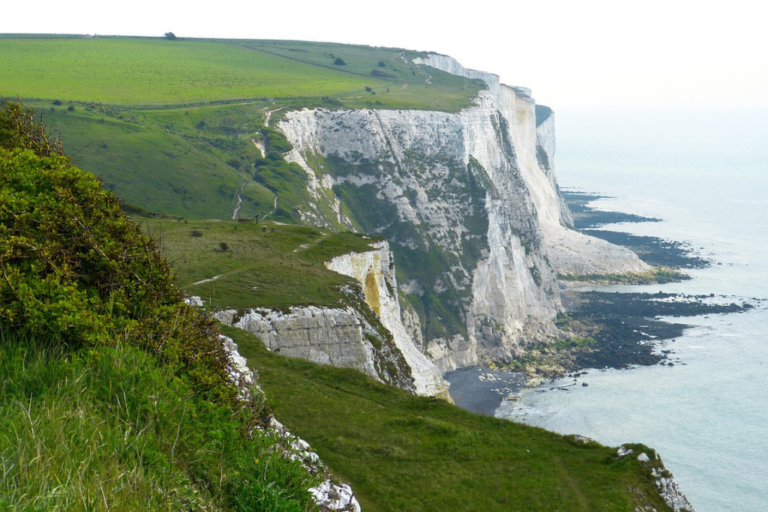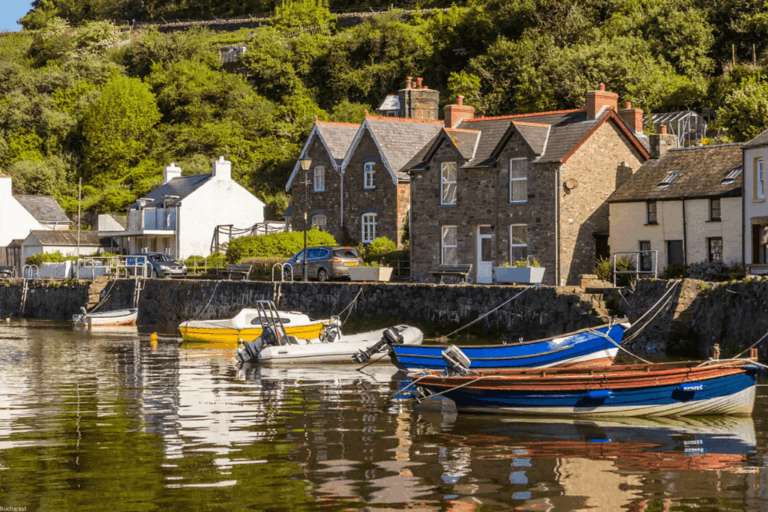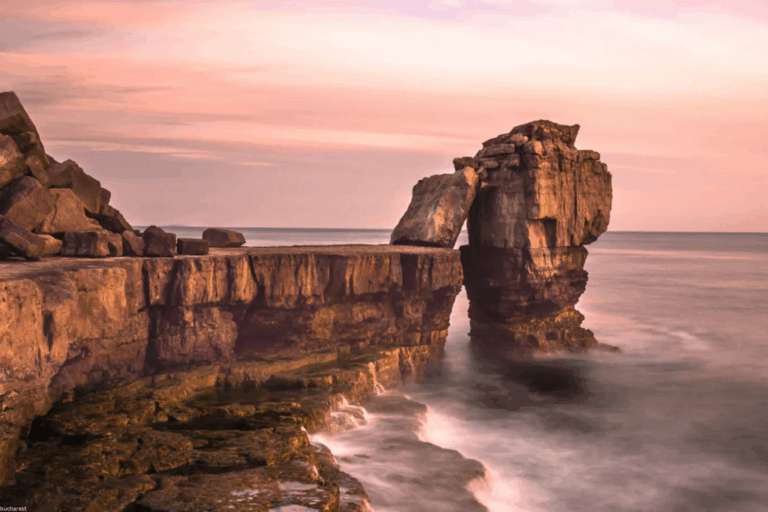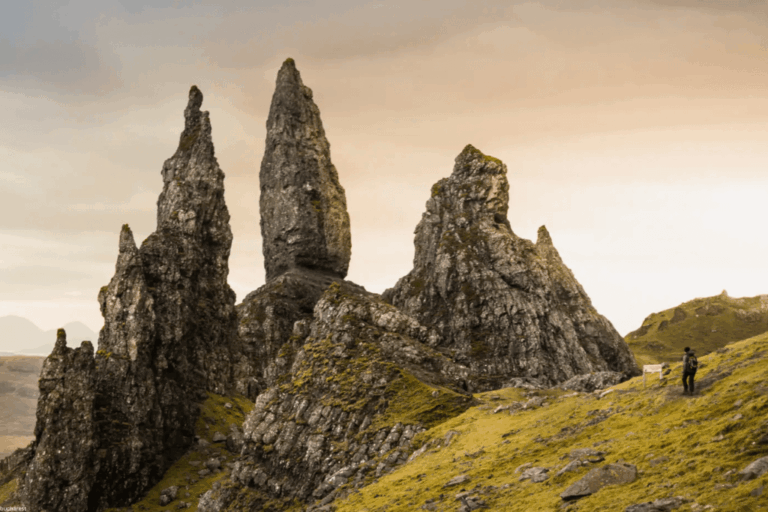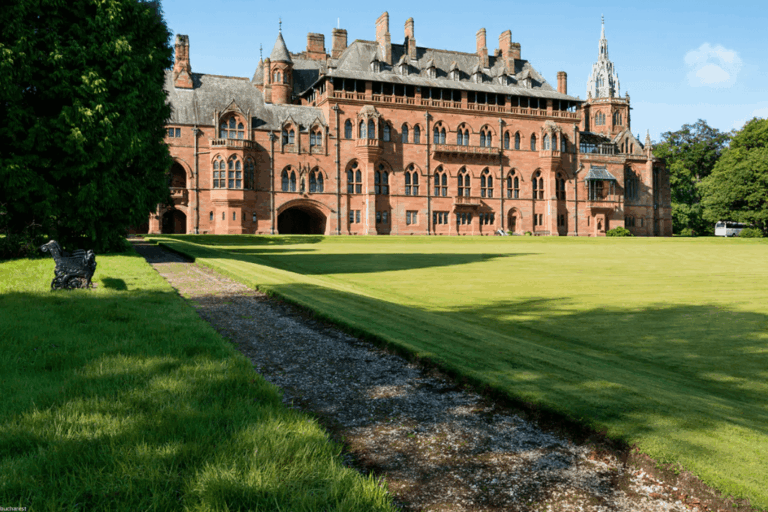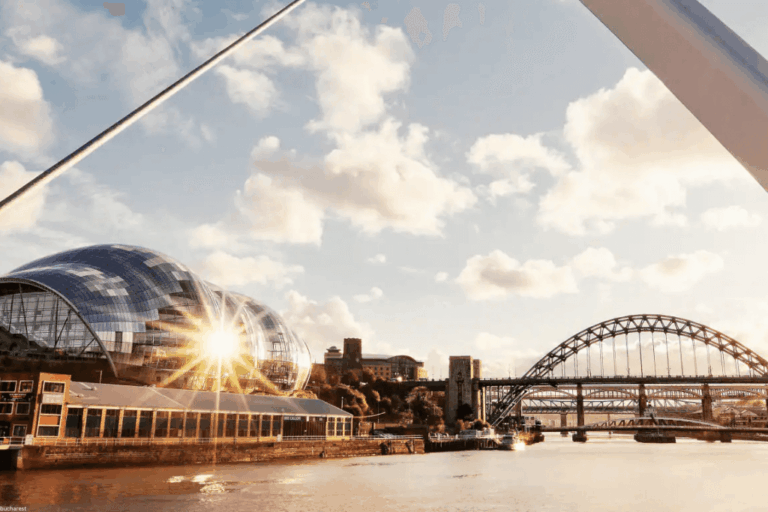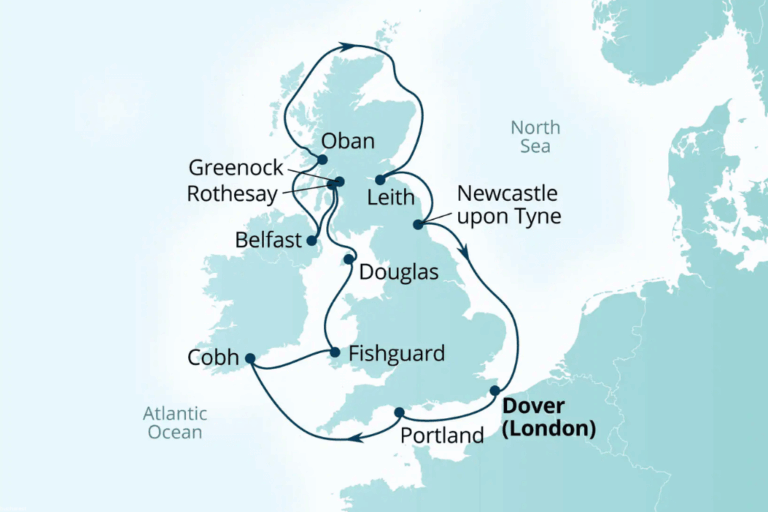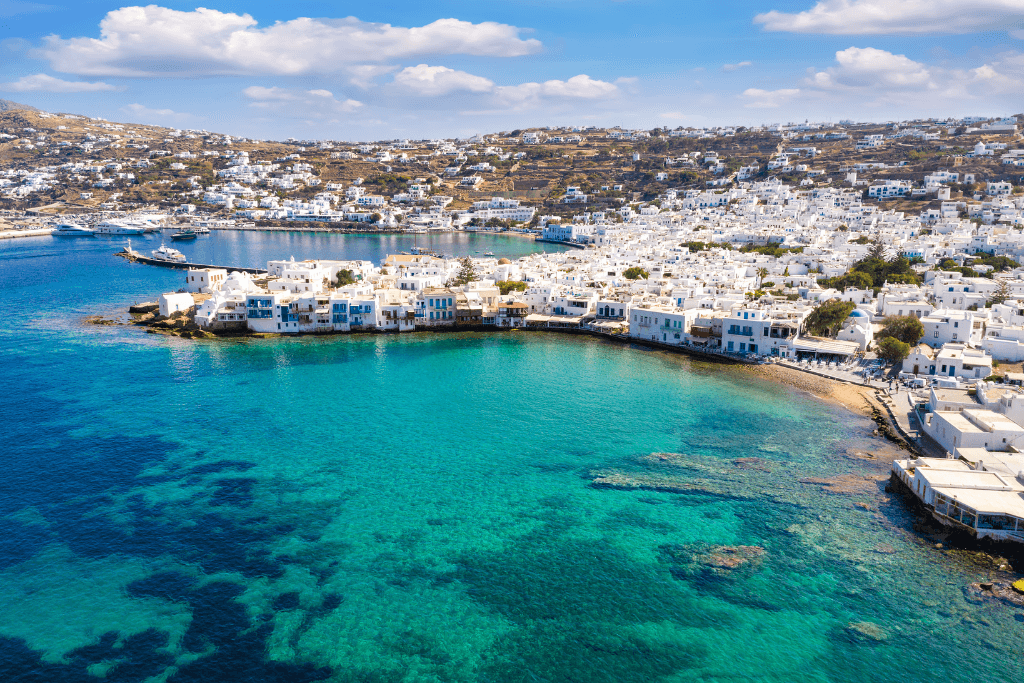- Overview
- Trip Outline
- Trip Includes
- Trip Excludes
- Price
- Gallery

Take in the rugged charm and storied coasts of the British Isles as you voyage through dramatic landscapes, historic harbors, and picturesque seaside towns aboard the elegant Seabourn Ovation. Each day brings a new discovery — from windswept cliffs and emerald glens to hidden coves and quaint fishing villages — all framed by the comfort and sophistication of ultra-luxury cruising. Let seaside vistas, cultural treasures, and refined onboard ambiance combine into an enchanting tapestry of Britain and Ireland revealed at sea.
The details:
- Seabourn Ovation
- 14 nights
- 27th June - 11th July 2026
- From £7,199 pp
- Price correct at time of publication 16/10/2025
Claim your FREE Helly Hansen jacket in partnership with Trends Gibraltar when you book your next Seabourn cruise with us!
Day 1 (Embarkation)
Dover, England
Day 2
Portland, England
Day 3
At Sea
Day 4
Cobh (Cork), Ireland
Day 5
Fishguard, Wales
Day 6
Douglas, Isle of Man
Day 7
Rothesay, Isle of Bute, Scotland
Day 8
Greenock (Glasgow), Scotland
Day 9
Belfast, Northern Ireland
Day 10
Oban, Scotland
Day 11
At Sea
Day 12
Leith (Edinburgh), Scotland
Day 13
Newcastle upon Tyne, England
Day 14
At Sea
Day 15 (Disembarkation)
Dover (London), England
Itineraries
Day 1
Dover, England
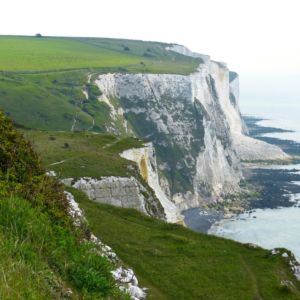
Approaching the coast, ships are greeted by the ethereal White Cliffs of Dover. This iconic strip of milky-white land serves as England's welcoming beacon, its stark beauty becoming more apparent as you draw closer. The coastline unfurls like a grand tapestry, its white chalk cliffs streaked with black flint, rising majestically 350 feet straight from the sea's embrace.
Day 2
Portland, England
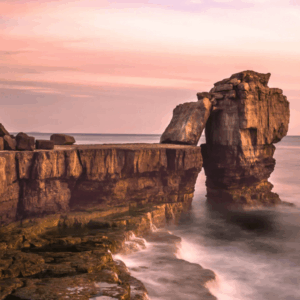
Portland Island and the resort town of Weymouth are connected by a 5-mile (8 km) long neck of white sand known as Chesil Beach. Renowned as the finest example of a barrier-type beach in Europe, Chesil Beach was formed 10,000 years ago as glaciers receded and sea levels rose.
Day 3
At Sea
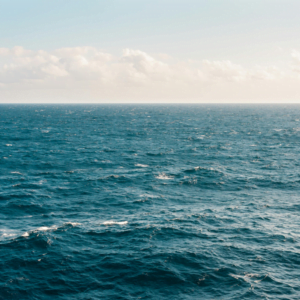
Day 4
Cobh (Cork), Ireland
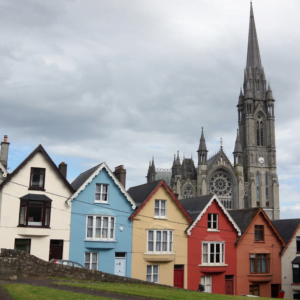
Ireland’s second-largest city, Cork takes belligerent pride in its history of rebellion. It was founded in the 4th century by St. Finbarr, for whom its first cathedral is named. Hardly less sacred to its citizens is the Cork City Gaol, where its rebel heroes often resided. Visit the Crawford Art Gallery for its collection of native Irish painters, and Blarney Castle for a look at feudal history. Further afield, nearby Cobh, formerly known as Queenstown, has an Emigration Centre tracing the history of the great Irish diaspora.
Day 5
Fishguard, Wales
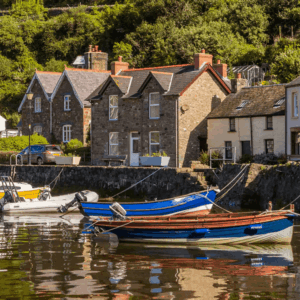
Fishguard’s name in Welsh is Abergwaun, meaning the mouth of the River Gwaun. The English name comes from an Old Norse word for a fish trap, and indeed the community has profited from catching and drying herring for centuries. It has remained remarkably unchanged physically over the years. The waterfront has a traditional feel like many others in Pembrokeshire. At first glance, nothing would indicate that this is the site of the last invasion of Britain by a foreign power. But a bicentenary stone recalls the day in 1797 when 1400 French revolutionary troops landed here, only to be routed by the local folk, including a heroic woman shoemaker named Jemima Nicholas, who rounded up more than a dozen dismayed invaders while armed with a pitchfork.
Day 6
Douglas, Isle of Man
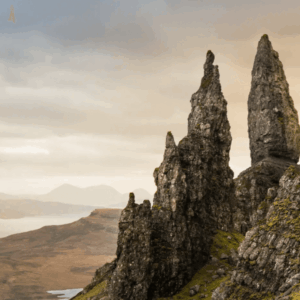
The town of Douglas is the center of the Isle of Man’s business, shipping, transport, shopping, and entertainment. It derives its name from the early Celtic word Duboglassio, meaning ‘black river.’ Located in the Irish Sea, equidistant from England, Scotland and Ireland, the Isle of Man is a self-governing possession of the British Crown and is not part of the United Kingdom, the Commonwealth, or an Overseas Territory, but instead holds a semiautonomous status. It is home to the world's oldest continuous parliament, known as the Tynwald Court.
Day 7
Rothesay, Isle of Bute, Scotland
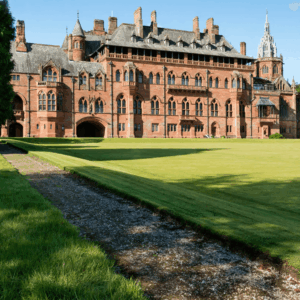
Rothesay, standing along the Firth of Clyde, presents the visitor with a combination of illustrious gardens and grand architecture. The magnificent ruins of Rothesay Castle, which date from the 13th century, are what most people visualize when they think of a medieval castle. With a drawbridge, encircling moat, immense circular curtain wall and tall stone towers, Rothesay is unique in Scotland for its circular plan. The ruins of St Blane's Chapel, a 6th century monastery, sit atop a hill with views over the Sound of Bute. For true elegance, visit the country estate of Mount Stuart House with its colonnaded Marble Hall and extraordinary Marble Chapel. Built in the late 1870’s in the Gothic Revivalist style, it was constructed of reddish-brown stone and houses a library of 25,000 books.
Day 8
Greenock (Glasgow), Scotland
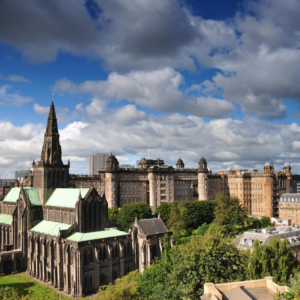
The town of Greenock grew from a fishing village to become the site of the first dock on the River Clyde in 1711. Fishing and shipbuilding became its major industries and the area served as a jumping off point for passenger ships departing for Canada and the U.S., as well as many vital convoys during the Second World War. The town’s maritime history is celebrated at the Custom House Museum in the Princes Pier Railway Station and in the scale model of a 20-gun frigate suspended above the Sailor’s Loft of Old West Kirk. Built in 1591, Old West Kirk (church), contains a major collection of Pre-Raphaelite stained glass windows.
Day 9
Belfast, Northern Ireland
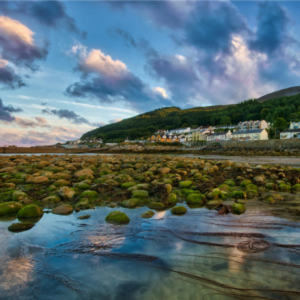
Belfast is Northern Ireland’s fun-loving and cosmopolitan capital. Its seat of government is Stormont Castle, a beautiful baronial mansion. There is something of interest here for everyone: Victorian architecture, a glittering waterfront, modern art, and over 90 Irish pubs. The Giant's Ring, a 5,000-year- old stone ‘henge’ shows occupation here since the Bronze Age. The magnificent copper dome of Belfast City Hall dominates the city centre. Belfast is also the site of the memorial statue for R.M.S Titanic, because it was here that the ship was built in 1909. Mixing the traditional with the ultra-modern, the Titanic Belfast Museum commemorates the fate of Titanic in its architecture. Shaped like the great prow of the ocean liner, the museum’s exhibits tell the story of the ill-fated vessel.
Day 10
Oban, Scotland
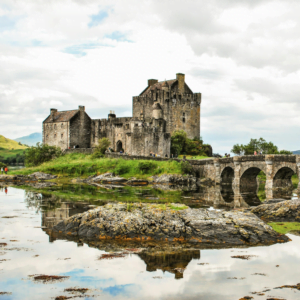
Oban is a small town on the west coast of Scotland. The site began as a small fishing outpost and has been occupied as such for literally thousands of years. Rural in its roots, the modern-day village of Oban grew around the famed whisky distillery founded in 1794. Renowned for its 14-year-old malt whisky, the Oban distillery has become a tourist attraction, drawing many visitors to the area.
Day 11
At Sea

Day 12
Leith (Edinburgh), Scotland
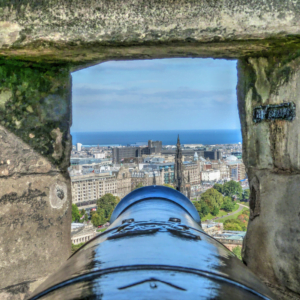
Edinburgh, the capital of Scotland, is a city that effortlessly combines ancient history with a vibrant modern energy. Its streets are steeped in stories, from the cobblestones of the Old Town to the elegant Georgian avenues of the New Town, both recognized as UNESCO World Heritage Sites. Visit Edinburgh Castle, majestically poised atop an ancient volcanic rock, and stroll the Royal Mile leading to the regal Palace of Holyroodhouse. Discover world-class art at the Scottish National Gallery and find serenity in the Princes Street Gardens. Marvel at the contemporary Scottish Parliament building, tour the decommissioned Royal Yacht Britannia, and when night falls, immerse yourself in Edinburgh's thriving cultural scene.
Day 13
Newcastle upon Tyne, England
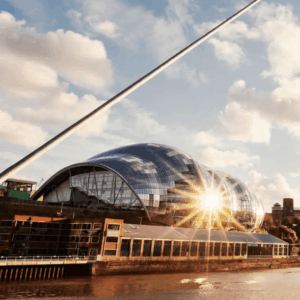
Newcastle upon Tyne, clinging to the north bank of the River Tyne, grew around the Roman settlement Pons Aelius and was named after the castle built here in 1080 by William the Conqueror's eldest son, Robert Curthose. The port developed in the 16th century, quickly becoming one of the world's largest shipbuilding centers. Newcastle harbors a spirited mix of heritage and urban sophistication.
Day 14
At Sea

Day 15
Dover (London), England

The echoes of ancient times resonate from every corner of Dover. Archaeological treasures hint at the presence of human life during the Stone Age, painting a vivid picture of the region's rich history. However, it was the Romans who first recorded Dover's significance, drawn by its strategic location just 21 miles from the French mainland. Dover is home to remarkable Roman remnants, including the tallest Roman-built lighthouse still standing in Britain, as well as the only preserved Roman wall mural outside Italy.
- Cruise only
- Complimentary premium spirits and fine wines available on board at all times.
- Complimentary caviar, an extra indulgence offered throughout your voyage.
- Welcome Champagne and complimentary in-suite bar stocked with your preferences.
- Complimentary Wi-Fi packages with unlimited minutes powered by SpaceX’s Starlink.
- Flights and transfers
From £7,199 per person
Price correct at time of publication (16/10/2025)

